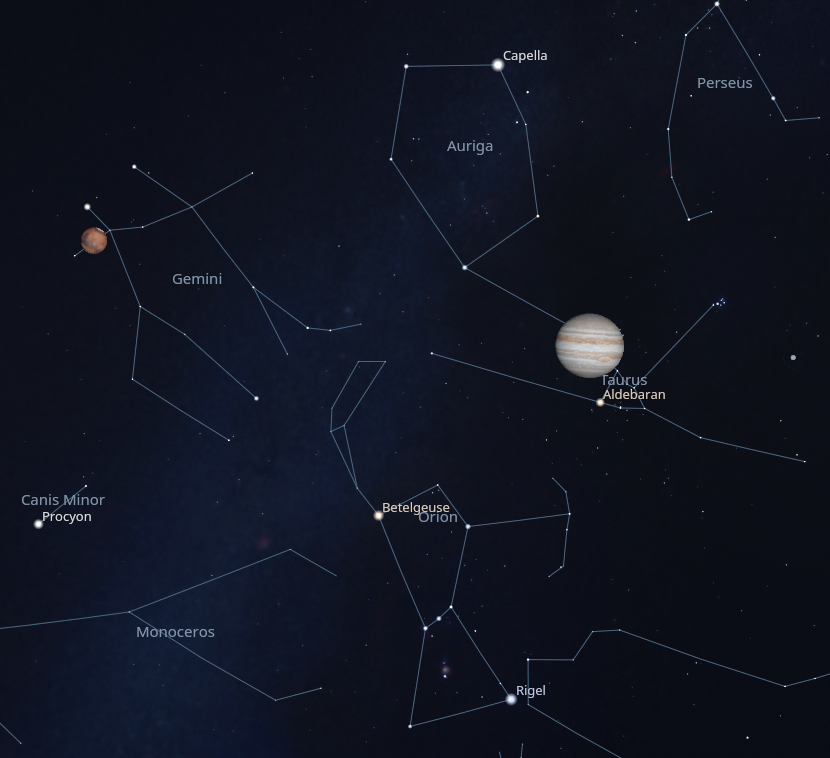
See the end of this page for a post-event review.
Early in the evening, we'll see the usual winter constellations, with Orion in the southeast. Jupiter and Mars will be prominent all night, but Saturn and Venus disappear relatively quickly.

The highlights of the evening are the bright planets Jupiter and Mars. Their apparent sizes have been exaggerated in the figure below, alas.

Mars, like the Earth, rotates on its axis in roughly 24 hours. That means that we'll see the surface features change a bit over the course of the evening. (In these pictures, South is up, to match the view in a typical telescope).

Unfortunately, due to the blur caused by the Earth's atmosphere, and the relatively small size of our telescopes, we will only be able to see the most prominent features on the Martian surface. The pictures below show a photograph taken just a few days ago (Jan 18) by Mike Wolle in Knittelfeld, Austria. On the left is a large version, with labels pointing to two features; on the right is a much smaller version, giving you a better idea of what you might see in one of our telescopes this evening.

We will also look at Jupiter this evening. Even though it is almost 7 times farther away than Mars, it still appears much larger to us on Earth: Jupiter is HUGE, the largest of the planets by far. In addition to the belts in its atmosphere, we should be able to see four of its moons early in the evening ... (Again, the images are inverted to match a telescope's view)

... but one of those moons will disappear behind the giant planet by 8 PM.

The weather, unfortunately, was not very helpful: the skies were mostly clear in the late afternoon, but just before sunset some clouds arrived, and they continued to cover most of the sky until about 7:30 PM. That made it difficult for us to show visitors the bright planets; we did what we could through the frequent clear patches.
At the peak of the clouds, around 7:15 PM, I gave a talk about the Perseverance Rover: how it works, what it has been doing at Mars, and how the samples it has been collecting might eventually be returned to Earth. After my presentation ended, we went back outside and had better luck, as the clouds began to disappear.
A total of between 40 and 50 visitors came to take a peek at Mars, Jupiter and Venus; some managed to see M42 as well.
I'd like to thank the students and faculty who volunteered to work at this event, braving the cold and dodging clouds for several hours. Below, left to right, are